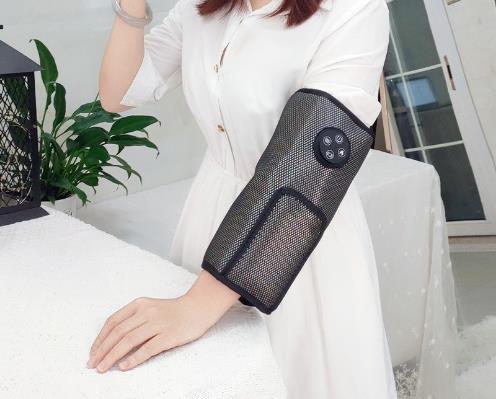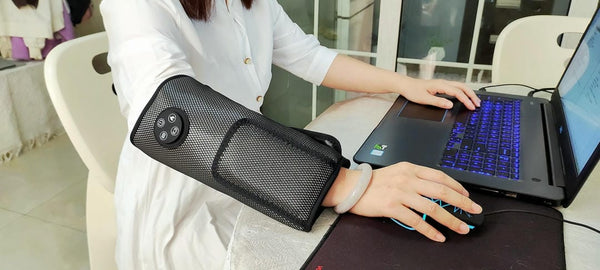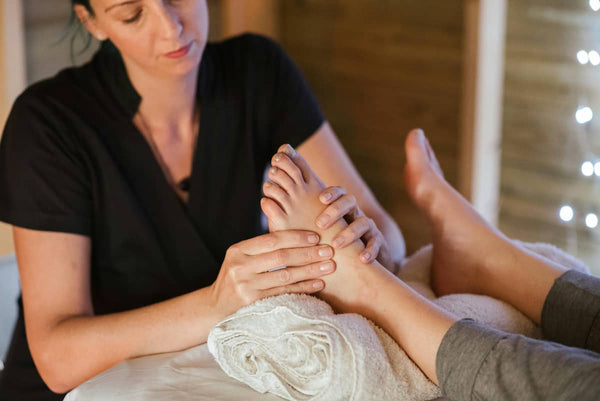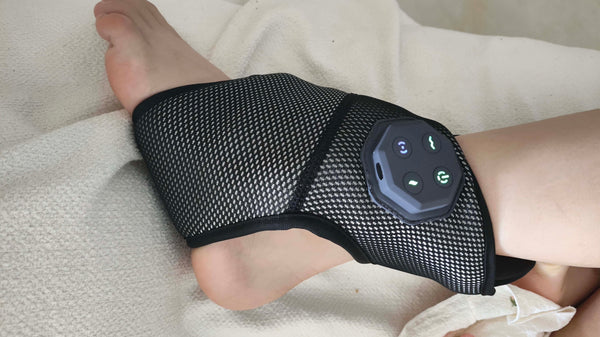 Imagine your feet, once reliable companions, now plagued by a relentless tingling, burning, or even sharp, shooting pain. This is the daily reality for countless individuals, particularly among middle-aged and elderly fitness enthusiasts, grappling with neuropathy-related foot pain. It's a condition that doesn't just hurt physically; it steals away the joy of movement, making even a simple walk a dreaded chore. As a rehabilitation physiotherapist, I see this challenge frequently, and it’s heartening to know there are various approaches to explore for relief.
Imagine your feet, once reliable companions, now plagued by a relentless tingling, burning, or even sharp, shooting pain. This is the daily reality for countless individuals, particularly among middle-aged and elderly fitness enthusiasts, grappling with neuropathy-related foot pain. It's a condition that doesn't just hurt physically; it steals away the joy of movement, making even a simple walk a dreaded chore. As a rehabilitation physiotherapist, I see this challenge frequently, and it’s heartening to know there are various approaches to explore for relief.
The quest for comfort often leads many to consider non-invasive solutions, and the topic of foot massage for neuropathy frequently arises. But does it truly help, or is it just a temporary feel-good? The efficacy of foot massagers on neuropathy is indeed a hot topic, with some users swearing by their benefits while others advocate for more traditional medical interventions. Let's unwrap the truth, exploring how different methods can contribute to your journey towards lasting comfort.
Why Does Neuropathy Cause Such Stubborn Foot Pain? Unraveling the Nerve Damage Mystery
Peripheral neuropathy is, in essence, a complex condition resulting from damage to your peripheral nerves—the intricate communication network that sends information from your brain and spinal cord to the rest of your body. When these nerves, particularly those extending to your feet, become damaged, their signals get scrambled. Instead of simply relaying sensations, they might misfire, sending signals of pain even when there's no actual injury, or, conversely, failing to transmit sensations altogether, leading to numbness. Have you ever felt that frustrating mix of numbness and burning at the same time?
This nerve damage can stem from various causes, with diabetes being one of the most common culprits. High blood sugar levels over time can literally starve and damage nerve fibers, leading to what’s known as diabetic neuropathy. Other causes include infections, autoimmune diseases, certain medications, nutritional deficiencies, and even physical injury. The result? A consistent, often debilitating, presence of tingling, numbness, sharp jabs, or an incessant burning sensation, making every step a potential source of discomfort. It's not just "old age aches"; it's a specific, complex issue.
Living with neuropathic foot pain impacts daily life significantly. Activities once taken for granted—like enjoying a morning jog, dancing at a wedding, or simply standing comfortably—become monumental tasks. The chronic pain can disrupt sleep, affect mood, and limit participation in social activities, ultimately eroding your overall quality of life. This is why finding effective, sustainable relief is not just about managing pain, but about reclaiming your life.
Beyond Just Kneading: Comparing Reflexology Foot Massagers with Other Pain Relief Pathways
 When it comes to alleviating foot pain, particularly from neuropathy, a variety of approaches are available. While some users swear by the immediate relief and comfort offered by modern devices like a reflexology foot massager, it's vital to understand where they fit into the broader spectrum of care. Let's delve into the different solutions, comparing their principles, target audiences, and effectiveness, so you can make informed decisions about your well-being.
When it comes to alleviating foot pain, particularly from neuropathy, a variety of approaches are available. While some users swear by the immediate relief and comfort offered by modern devices like a reflexology foot massager, it's vital to understand where they fit into the broader spectrum of care. Let's delve into the different solutions, comparing their principles, target audiences, and effectiveness, so you can make informed decisions about your well-being.
Multi-functional Foot Massagers (e.g., Klcosy Model)
Many modern foot massagers, such as the widely discussed Klcosy model, operate on principles that mimic traditional massage techniques, often combining several therapeutic elements. They typically employ a blend of kneading, rolling, air compression, and heat therapy to stimulate blood flow, relax muscles, and soothe nerve endings. The underlying idea is that gentle stimulation can help desensitize nerves, reduce inflammation, and improve circulation, which is crucial for nerve health. Think of it as a personal spa treatment right in your living room, designed to bring a little comfort to troubled feet.
These devices are particularly suited for individuals seeking convenient, at-home symptom alleviation or as an adjunct to professional care. They offer a non-pharmacological option for managing discomfort, especially for those with mild to moderate symptoms, or those who simply enjoy the relaxing benefits of a good foot rub. Users have reported significant symptom alleviation, attributing it to the four-in-one combination functions, adjustable modes, and the overall ease of use and safety. It’s certainly a simple, accessible way to introduce regular sensory input to the feet.
- Principle: Combines kneading, rolling, compression, and heat to stimulate blood flow and relax tissues.
- Target Audience: Individuals seeking convenient home relief, mild to moderate symptoms, adjunct therapy.
- Effectiveness: Reported symptom alleviation, relaxation, improved local circulation, user-friendly.
Medical Interventions (Drug Treatment & Physical Therapy)
For many with neuropathy, medical intervention forms the cornerstone of their treatment plan. This typically involves pharmacological approaches, such as prescription medications designed to manage neuropathic pain (e.g., gabapentinoids, tricyclic antidepressants), which can directly calm overactive nerve signals. Beyond medication, physical therapy plays a pivotal role, utilizing targeted exercises, manual therapy, and modalities to improve nerve function, muscle strength, balance, and reduce pain. As a physiotherapist, I often guide patients through specific nerve gliding exercises to enhance nerve mobility and reduce impingement.
These interventions are crucial for individuals experiencing severe pain, progressive symptoms, or those requiring an expert diagnosis to pinpoint the underlying cause. Medical professionals can tailor treatments based on the type and severity of neuropathy, often leading to more substantial and sustainable relief. The effectiveness of these methods is evidence-based, addressing the root causes of nerve damage and pain, providing a comprehensive approach to managing the condition. This is where the science of healing truly comes into play, offering targeted solutions.
Lifestyle & Non-Device Means (Diet, Exercise)
While devices and medications offer direct symptom management, a holistic approach to neuropathy care must include fundamental lifestyle changes. Diet, for instance, plays a critical role, especially for diabetic neuropathy. Maintaining stable blood sugar levels through a balanced diet is paramount to preventing further nerve damage and supporting nerve repair. Nutrient-rich foods can provide the essential building blocks for nerve health, while avoiding inflammatory foods can reduce overall bodily stress. This isn't just about weight management; it's about internal healing.
Equally important is regular exercise. Engaging in low-impact activities like walking, swimming, or cycling can improve circulation to the feet, which is vital for nerve nourishment. Furthermore, specific massage techniques, such as gentle self-massage or assisted stretching, can be integrated into your daily routine to maintain flexibility and provide direct soothing. These non-device means are foundational, supporting overall health and creating an optimal environment for nerve recovery and pain reduction. They empower you to take an active role in your own healing, every single day.
Empowering Your Journey: A Physiotherapist's Advice on When to DIY vs. Seek Expert Help
Navigating the world of neuropathy pain relief can feel like walking a tightrope. On one side, you have the allure of convenient, at-home solutions like a fantastic best foot massager for neuropathy; on the other, the necessity of professional medical guidance. From my experience, a balanced approach is almost always the most effective. Knowing when to rely on self-care and when to consult a specialist is key to truly lasting comfort and preventing further complications.
You can certainly embrace DIY methods if your symptoms are mild, stable, or you're seeking additional comfort alongside professional treatment. Using a foot massager at home, practicing gentle stretching, or adopting healthier eating habits are excellent first steps. These tools and lifestyle adjustments can significantly improve circulation, reduce muscle tension, and provide symptomatic relief without the need for immediate medical intervention. Remember, consistency is your best friend when it comes to self-care.
However, it's crucial to know when to put down the massager and pick up the phone to schedule an appointment. If your pain is worsening, new symptoms emerge (like foot ulcers, severe numbness, or loss of balance), or if your current pain is significantly impacting your daily life, it’s time to seek expert help. A physiotherapist can provide a thorough assessment, diagnose underlying issues, and develop a tailored treatment plan, often involving specific exercises, manual therapy, and advice on nerve protection. Moreover, understanding your insurance coverage for physical therapy can also provide peace of mind as you seek professional care.
How to massage foot?
Learning how to perform a foot massage effectively can be incredibly beneficial for neuropathic pain. The key is gentle, consistent pressure, focusing on promoting blood flow and stimulating sensory nerves without causing irritation. Start with a warm foot soak to relax the muscles. Then, using a lotion or oil, begin with light, circular motions over the entire foot, including the toes, sole, and heel. Gradually apply slightly more pressure as tolerated, using your thumbs to knead the arch and your fingers to gently pull and rotate each toe.
Focus on areas of tightness or discomfort, but avoid excessive pressure on very sensitive spots. Incorporate strokes that move from the toes towards the ankle to encourage venous return. Consider ending with a gentle Achilles tendon stretch. A common mistake is applying too much pressure too quickly, which can aggravate already sensitive nerves. A good session should last 10-15 minutes per foot. Consistency, say 2-3 times a day, is often more effective than sporadic intense sessions. This can be done by hand or with a specialized device, like a best foot massager for neuropathy.
Does foot massage help circulation?
Yes, absolutely! One of the significant benefits of regular foot massage is its positive impact on circulation, which is particularly vital for individuals with neuropathy. Massage physically manipulates the soft tissues, helping to dilate blood vessels and encourage blood flow to the extremities. Improved circulation means more oxygen and nutrients reach the nerve tissues, supporting their health and potentially aiding in repair. It also helps in the removal of metabolic waste products, which can accumulate and contribute to discomfort. This is why you often feel a warm sensation after a good foot rub.
Moreover, enhanced circulation can reduce swelling and fluid retention in the feet and ankles, alleviating pressure on delicate nerves. For people with diabetes, where compromised circulation is often a concern, consistent massage can be a valuable adjunct to their overall foot care regimen. While it's not a cure for nerve damage, optimizing blood flow provides a healthier environment for nerve function and can contribute significantly to pain reduction and overall foot comfort. It’s like giving your feet a much-needed internal shower!
Can diabetics use foot massagers?
This is a critical question, and the answer is nuanced: generally yes, but with significant caution and, ideally, under medical guidance. For many diabetics, foot massagers can indeed offer relief from discomfort, improve circulation, and reduce muscle tension. However, individuals with diabetic neuropathy often have reduced sensation in their feet, meaning they might not feel excessive pressure or heat that could cause damage. This is a crucial safety aspect to consider before purchasing the best foot massager for neuropathy.
Therefore, if you have diabetes, especially with existing neuropathy, it's essential to:
- Consult Your Doctor: Always speak with your healthcare provider or a podiatrist first. They can assess your specific condition and advise on suitability.
- Choose Wisely: Opt for massagers with adjustable intensity and heat settings. Avoid intense kneading or percussion settings that could be too aggressive.
- Monitor Closely: Regularly inspect your feet for any signs of redness, blisters, or skin irritation after use.
- Avoid Hot Settings: If sensation is impaired, it's safer to avoid using heat functions to prevent burns.
In conclusion, managing neuropathy foot pain is a multi-faceted journey that can benefit from a combination of approaches. Whether you explore the comforting embrace of a foot massager, adhere to prescribed medical treatments, or commit to fundamental lifestyle changes, remember that consistent, informed action is your greatest asset. Your feet carry you through life, and they deserve the best care possible.
Take Action for Lasting Comfort!
Ready to take the next step in your journey to pain relief? We've got resources that can help!
Explore Recommended Foot Massagers!
Subscribe for Weekly Pain Relief Tips!




0 comments